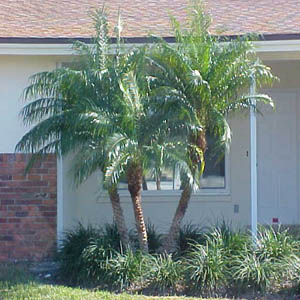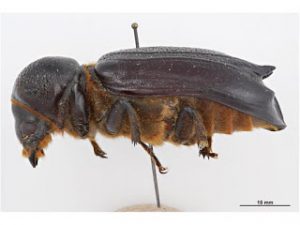In the tropical haven of South Florida, characterized by high temperatures and humidity, palm trees play a vital role both aesthetically and ecologically. Beyond their visual allure, these trees contribute to the region’s ecosystem, providing shade, oxygen, and habitat for diverse wildlife. This article from Zimmerman Tree Service, a premier provider of tree services in Palm Beach aims to explore the intricacies of caring for palm trees in summer, emphasizing the important points to keep track of during the season. By offering practical insights into how to care for a palm tree, the goal is to empower readers with the knowledge needed to ensure the resilience and vibrancy of their palm trees in the face of the challenging summer conditions unique to South Florida.
Types of Summer Palm Trees
When it comes to caring for palm trees in summer months, a diverse array of palm tree species graces the landscape, including notable varieties such as Royal Palms, Sabal Palms, and Coconut Palms. Each species comes with its unique characteristics, contributing to the rich tapestry of the region’s greenery. When it comes to proper care for palm trees in summer, understanding the specific root care considerations for each species is crucial. Delving into the root structures and growth patterns of different varieties allows for a more nuanced approach to maintenance. Recognizing the differences in root depth and spread becomes paramount for providing tailored care that ensures the health and vitality of each palm tree. Therefore, before embarking on a care regimen, it’s essential for enthusiasts to accurately identify the palm tree species in their yards. This knowledge serves as a foundation for implementing effective and species-specific care strategies, promoting the overall well-being of these iconic trees in the South Florida environment.
Palm Tree Care for Roots
Root care is a fundamental aspect of maintaining the overall health and vitality of palm trees in South Florida. The intricate network of roots plays a pivotal role in sustaining the tree, making it essential to prioritize their well-being. Proper planting depth and spacing are key considerations in this regard, with recommendations tailored to different palm species. Ensuring the right depth and avoiding root competition through adequate spacing contribute significantly to root health. Recognizing signs of root issues, such as discoloration, wilting, or stunted growth, is crucial for timely intervention. Addressing these problems involves making adjustments in irrigation practices and incorporating suitable soil amendments.
In addition to these measures, employing effective mulching techniques further enhances root care when caring for palm trees in the summer. Mulching serves as a protective layer, regulating soil temperature around the roots and aiding in moisture retention. Understanding the benefits of mulching and implementing guidelines on the type and thickness of mulch can significantly contribute to maintaining optimal conditions for palm tree roots. By adhering to these root care techniques for the care of palm trees, enthusiasts can foster a robust foundation for their trees, ensuring their longevity and resilience in the dynamic South Florida environment.
Care for Palm Trees With Proper Water
Proper watering is paramount during the scorching summer months in South Florida. Palm trees, particularly sensitive to water fluctuations, demand a well-thought-out watering strategy. Understanding the frequency and amount of water required for different palm species is crucial. Checking soil moisture levels regularly provides valuable insights into when watering is necessary. Adjusting the watering schedule during periods of drought is equally important to address the heightened water needs required when caring for palm trees in hotter months. Implementing these watering techniques ensures that palm trees receive adequate hydration, promoting their resilience in the face of the intense summer heat.
Pest and Bug Removal for Palm Tree Health
Caring for palm trees in South Florida requires vigilant pest management, particularly during the summer months. Identifying common pests affecting palm trees, such as aphids, scales, and spider mites, is a foundational step in effective pest removal. The signs of pest infestation, including yellowing fronds and visible damage, serve as early indicators, prompting swift action. Pest removal strategies encompass a combination of manual techniques and environmentally friendly solutions. Physically removing pests and visible signs can be a hands-on approach to control their population. Simultaneously, utilizing insecticidal soaps or oils that are gentle on the environment can provide an effective solution. Furthermore, fostering the presence of natural predators, such as beneficial insects, contributes to maintaining a balanced ecosystem and controlling pest populations. Implementing these comprehensive pest removal strategies is crucial for safeguarding palm trees from potential harm and ensuring their longevity in the diverse and challenging environment of South Florida.
How to Care for a Palm Tree Through Disease Prevention
In the lush landscapes of South Florida, palm trees are susceptible to various factors that can impact their overall well-being. A proactive approach to disease prevention is crucial for maintaining the health of these iconic trees during the summer. Practices aimed at preventing the spread of diseases, including proper sanitation and avoiding overwatering, play a pivotal role. Early detection and treatment are essential, and regular inspections for symptoms like discoloration, wilting, or unusual growth patterns are recommended. By understanding the dynamics of disease prevention, enthusiasts can contribute to the resilience of these trees, ensuring they thrive and stand resilient while you’re caring for palm trees in the vibrant South Florida environment.
Get the Tree Service Palm Beach, FL, Trusts
Amidst the verdant landscapes of South Florida, palm trees face potential challenges from various diseases during the summer months. Taking a proactive stance on summer care is essential for the well-being of these iconic trees. Offering insights into common summer-related issues, such as fungal infections or bacterial diseases, aids readers in identifying potential threats to their palm trees. South Florida tree service practices that focus on care, Zimmerman is Palm Beach County’s most trusted arborist and is proud to offer unmatched levels of care.
These services offered by our team become essential for complete palm trees during the summer. By delving into the nuances of summer care, enthusiasts can actively contribute to the resilience and thriving health of palm trees, ensuring they withstand the seasonal challenges presented in the vibrant environment of South Florida. Read our other blog articles today or feel free to reach out to us for a direct discussion with our team now.
FAQs About Caring for Palm Trees
How Do You Take Care of a Potted Palm Tree?
Potted palm trees require specific care to thrive. Ensure the pot has drainage holes to prevent waterlogging, use a well-draining soil mix, and place a layer of mulch on top for moisture retention. Water when the top inch of soil feels dry, but avoid overwatering. Regularly inspect for pests and provide occasional fertilization during the growing season.
Do Palm Plants Need Direct Sunlight?
Most palm plants thrive in bright, indirect light but may tolerate some direct sunlight. South Florida’s climate usually provides ample sunlight, but it’s essential to monitor for signs of sunburn, especially for indoor palms. Adjust placement to provide the right balance of sunlight, and consider acclimating them gradually to direct sun exposure.
Do Palms Like to Be Misted?
While some palms appreciate higher humidity, misting might not be sufficient in South Florida’s naturally humid environment. Instead, focus on maintaining proper watering and consider grouping palms together for increased humidity. Ensure good air circulation to prevent fungal issues that excessive misting might exacerbate.
How Often Should You Water a Palm Tree?
The frequency of watering depends on factors like palm species, size, and environmental conditions. In South Florida’s summer heat, palms may need more frequent watering. Generally, water when the top inch of soil is dry, ensures the water reaches the entire root ball. Adjust the watering schedule based on specific palm species and local climate variations.
What Is the Best Potting Mix for Palm Trees?
The optimal potting mix for palm trees should be well-draining. A mixture of peat moss, perlite, and pine bark is commonly recommended. Ensure the mix allows water to pass through while retaining some moisture. Consider adding slow-release fertilizer to provide essential nutrients. Tailor the potting mix to the specific needs of the palm species and adjust based on environmental conditions in South Florida.








